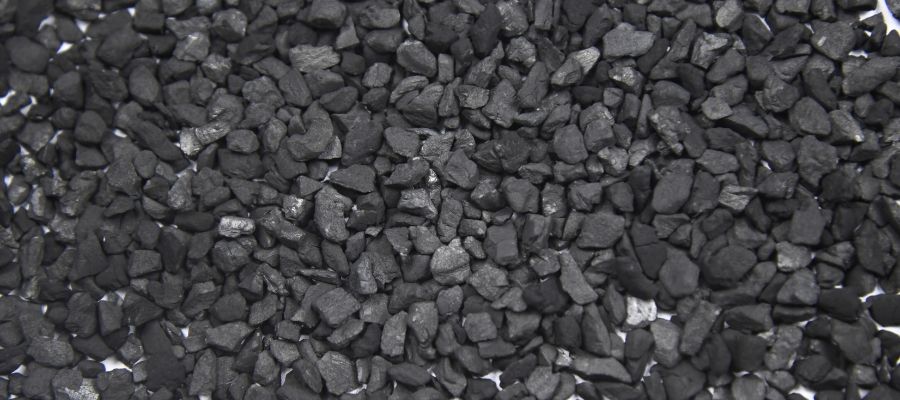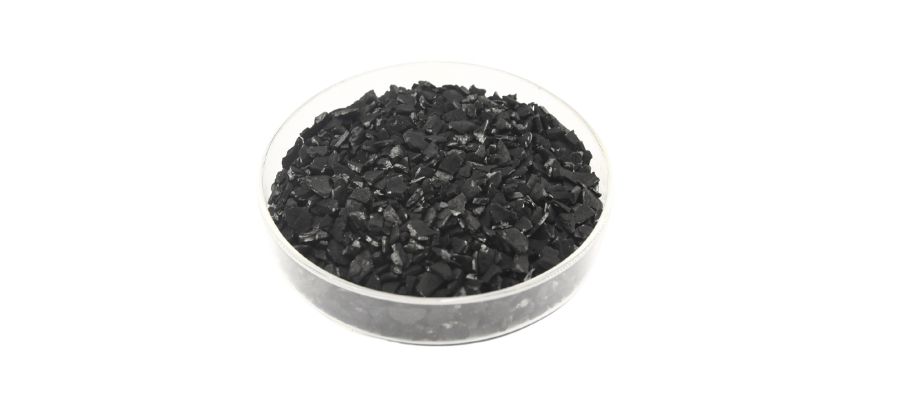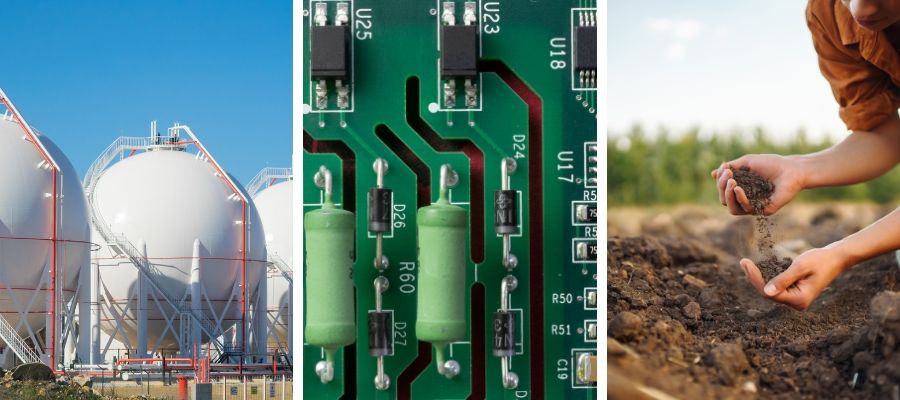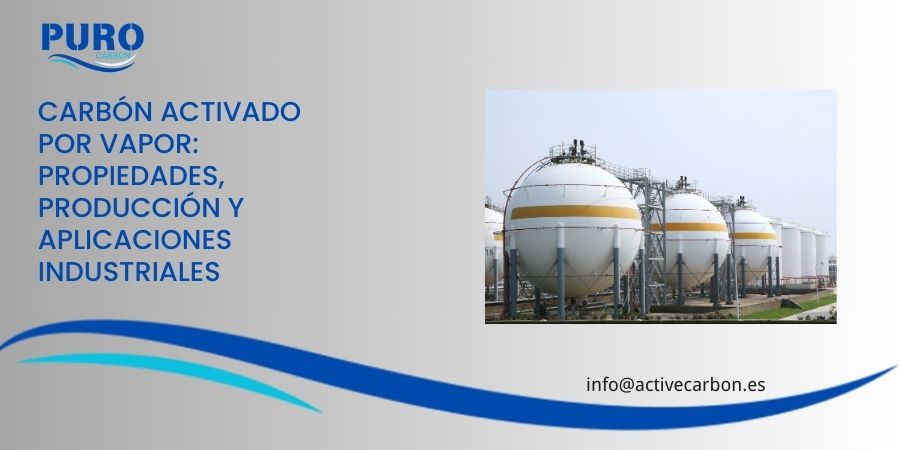Steam activated carbon plays an important role in a wide range of industries due to its excellent adsorption properties. This product is the result of a specific activation process and has become a key component in applications ranging from water purification to industrial gas separation.
In this article, we will take an in-depth look at the definition of steam activated carbon, how it is produced, its unique properties and its various applications.
What Is Steam Activated Carbon?

Steam activated carbon is a special type of activated carbon characterized by its highly developed porous structure and large internal surface area. It is produced by a physical activation process using steam at high temperatures. This activation method creates a material with exceptional adsorption capacity, capable of trapping and retaining a wide range of contaminants and molecules.
Unlike other types of activated carbon, such as chemically activated carbon, steam activated carbon is distinguished by its cleaner production process and the absence of chemical residues in the final product. This makes it particularly attractive for applications where purity is crucial, such as in the food and pharmaceutical industries.
Request a QuoteSteam Activated Charcoal Production Process
Steam activated carbon production is a fascinating process involving several carefully controlled stages:
- Raw material selectionThe process begins with the choice of the appropriate raw material. Commonly, materials such as coconut shell, charcoal, wood or peat are used. At PuroCarbon S.L., we offer a variety of options, including coconut shell activated carbon, carbon-based activated carbon, y activated wood charcoal.
- CarbonizationThe feedstock is heated in the absence of oxygen to temperatures between 400°C and 900°C. This process removes most of the non-carbonaceous components and creates a basic carbon structure.
- Steam activationCarbonized material is exposed to water vapor at very high temperatures, generally between 800°C and 1000°C. The steam reacts with the carbon, creating an intricate network of pores and significantly increasing the internal surface area.
- Cooling and processingAfter activation, the coal is cooled and processed to desired specifications, which may include grinding, screening and classifying into different particle sizes.
The result of this process is an activated carbon with a well-developed porous structure and a large internal surface area, which may exceed 1000 m²/g.
Steam Activated Carbon Characteristics

Steam activated carbon possesses a number of unique characteristics that make it highly effective in a variety of applications:
- High internal surfaceSteam-activated carbon: Thanks to its porous structure, steam-activated carbon can have an internal surface area of up to 1500 m²/g, which gives it exceptional adsorption capacity.
- Varied pore distributionIt contains a mixture of micropores ( 50 nm), which allows it to adsorb a wide range of molecules of different sizes.
- DurabilitySteam activation process: The steam activation process produces a stronger and more durable carbon compared to other activation methods.
- RegenerabilitySteam-activated carbon can be regenerated and reused several times, which makes it more economical in the long run.
- PurityAs no chemicals are used in its activation, this type of charcoal is particularly pure and free of residual contaminants.
- VersatilityIt can be produced in different forms, such as granular activated carbon, powdered activated carbon, o activated carbon pelletsadapting to various applications.
Steam Activated Carbon Applications

Steam activated carbon is a specially treated activated carbon with high specific surface area and high adsorption capacity, which is widely used in many fields. The following are some of the main applications:
- Water treatmentIt is used to remove contaminants such as organic matter, heavy metals and chlorine from water.
- Air purificationIt can effectively adsorb volatile organic compounds (VOCs), odors and noxious gases in the air.
- Industrial gas separationVapor-phase activated carbon can be used to separate and purify gases in the petrochemical and natural gas processing industries.
- Pharmaceutical and food industryIt is used for decolorization, deodorization and removal of impurities to ensure the safety and quality of the products.
- Catalyst supportIt is used as a carrier for catalysts to improve the efficiency and selectivity of reactions.
- Energy storageUsed as electrode material in supercapacitors and batteries to improve energy storage capacity.
- AgricultureIt is used in soil improvement to increase its water and nutrient retention capacity.
Steam activated carbon plays an important role in environmental protection and industrial applications due to its high performance and versatility.
Request a QuoteComparison With Other Activated Carbon Types
Steam activated carbon differs from other types of activated carbon in several respects:
- Chemically activated carbonUnlike steam-activated carbon, chemically activated carbon uses agents such as phosphoric acid or zinc chloride. Although it may have a higher specific surface area, steam activated carbon is generally purer and suitable for sensitive applications.
- Thermally activated carbonThis type of activation does not use steam, but only high temperatures. Steam activated carbon usually has a more developed porous structure and a higher adsorption capacity.
- Impregnated activated carbonSome activated carbons are impregnated with chemicals to improve their performance in specific applications. At PuroCarbon S.L., we offer impregnated activated carbon for special needs.
Conclusion
Steam activated carbon is a truly remarkable material with a wide spectrum of applications in various industries. Its unique production process, using steam at high temperatures, results in a high quality product with a well-developed porous structure and exceptional adsorption capacity.
At PuroCarbon S.L., we are proud to offer a wide range of high quality activated carbon products, including steam activated carbon in various forms and for different applications. If you are interested in exploring how our products can benefit your industry or process, please feel free to contact us at get in touch with us for more information or to request a quote.
Frequently Asked Questions
Steam-activated carbon is produced using steam at high temperatures, while chemically activated carbon uses chemical agents such as acids or salts. Steam-activated carbon is usually purer and suitable for sensitive applications, while chemically activated carbon may have a higher specific surface area.
Yes, steam activated carbon can be regenerated several times. The regeneration process involves heating the spent carbon to remove adsorbed contaminants. However, each regeneration cycle may result in a small loss of adsorption capacity.
Industries that benefit most include water and wastewater treatment, air purification, gold mining, food and beverage, pharmaceutical and solvent recovery.
Yes, steam activated carbon is generally considered safe for food industry applications due to its clean production process and absence of chemical residues. However, it is important to use food grade activated carbon specifically approved for these applications.
The quality of steam activated carbon is determined by several parameters, including its specific surface area, pore size distribution, hardness, ash content, and adsorption capacity for specific contaminants. These properties are measured through various standardized test methods.
